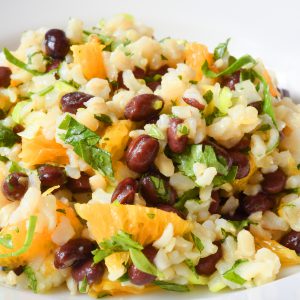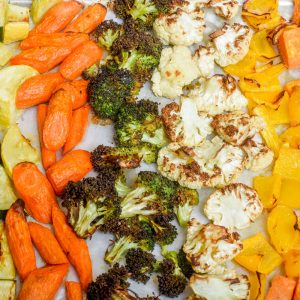Rethink Takeout
go.ncsu.edu/readext?954711
en Español / em Português
El inglés es el idioma de control de esta página. En la medida en que haya algún conflicto entre la traducción al inglés y la traducción, el inglés prevalece.
Al hacer clic en el enlace de traducción se activa un servicio de traducción gratuito para convertir la página al español. Al igual que con cualquier traducción por Internet, la conversión no es sensible al contexto y puede que no traduzca el texto en su significado original. NC State Extension no garantiza la exactitud del texto traducido. Por favor, tenga en cuenta que algunas aplicaciones y/o servicios pueden no funcionar como se espera cuando se traducen.
Português
Inglês é o idioma de controle desta página. Na medida que haja algum conflito entre o texto original em Inglês e a tradução, o Inglês prevalece.
Ao clicar no link de tradução, um serviço gratuito de tradução será ativado para converter a página para o Português. Como em qualquer tradução pela internet, a conversão não é sensivel ao contexto e pode não ocorrer a tradução para o significado orginal. O serviço de Extensão da Carolina do Norte (NC State Extension) não garante a exatidão do texto traduzido. Por favor, observe que algumas funções ou serviços podem não funcionar como esperado após a tradução.
English
English is the controlling language of this page. To the extent there is any conflict between the English text and the translation, English controls.
Clicking on the translation link activates a free translation service to convert the page to Spanish. As with any Internet translation, the conversion is not context-sensitive and may not translate the text to its original meaning. NC State Extension does not guarantee the accuracy of the translated text. Please note that some applications and/or services may not function as expected when translated.
Collapse ▲Busy lifestyles compete with time spent in the home kitchen. Ordering takeout can seem like the easiest, most convenient option on a weeknight. Eating out provides convenient nourishment as well as opportunities for socializing, celebrating, and experiencing new flavors. There is nothing wrong with eating out because it is one of life’s pleasures. However, it is good to make mindful decisions and if you look closely, you can find dishes that aren’t full of cheese, red meat, sugar, or half a day’s calories. Changing the way we order meals can improve nutritional quality without sacrificing convenience or taste.
Tips to rethink takeout:
- Stick to one starch. The default is often double refined carbs like a hamburger and fries. Go with your favorite starch and try to make it a whole grain.
- Replace red meat. Get poultry, seafood, or beans. Also, look for the words grilled, steamed, lightly sautéed, baked and roasted on the menu.
- Load up on vegetables. Choose vegetable-based side dishes, pile vegetables onto your burrito bowl and don’t be afraid to try a vegetarian meal!
- Mind the sodium. Nearly all food served in restaurants is too salty. More vegetables can help counter the sodium in other items.
- Dressing on the side. Ask for any dressings, oil, butter or sauces on the side so that you can choose how much you add to your dish.
- Be mindful of portion sizes. Portion sizes are scaling up. Today’s “medium” is often yesterday’s “extra-large.” Share your meal with a friend or family member. Set aside half of your entree to save for another meal before you begin eating.
- Make water your beverage of choice. It is easy to forget about the sneaky calories in sugar-sweetened or alcoholic beverages.
Here are few healthy tips to consider when dining out for a variety of cultures.
Asian
- Order vegetables with a grilled protein or choose a vegetarian meal.
- Choose brown rice instead of white rice.
- Get sushi made with rolled cucumbers instead of rice.
- Choose broth-based soups and dishes.
- Choose broth-based soups and dishes.
- Steer clear of sugar-based sauces (like duck or plum).
Mexican
- Try a burrito bowl or salad. Order it heavy with vegetables and lighter on the meats and rice.
- Go minimal on toppings (like sour cream and cheese), and add fiber-rich options like tomatoes, lettuce, onions, and salsa.
- Opt for corn tortillas rather than flour tortillas.
- Be mindful of the chips and salsa. Ask for them to be taken away or only take a small amount with your meal. Avoid filling up on them before your meal.
- Cut burritos in half and save half for lunch the next day.
Italian
- Ask for whole-wheat or whole-grain pasta.
- Ask for a child size serving or a take-out container when you order. As a single serving size of pasta is two ounces of dry pasta—amounting to about a cup of cooked pasta. Pasta is inexpensive so often a family size platter is served in a restaurant for one person with 3 servings of pasta.
- Look for these words on the menu: grilled, steamed, lightly sautéed, baked, roasted, seared or broiled.
- If you are choosing a pasta dish, choose one that incorporates a lean protein, and opt for marinara or a simple sauce made of olive oil, lemon, and garlic. Skip the Alfredo or cream sauces.
- Be mindful of bread or breadstick appetizers. Choose to not eat them, or eat only one small piece with your meal.
Indian
- Try kebabs made with prawns, grilled chicken, tandoori salmon, or vegetables.
- Look for dal, such as dal Bukhara, made with lentils and beans and loaded with fiber and protein.
- Order steamed vegetables to stir into curries. This adds volume and reduces the calories from fats like ghee and cream.
Making Smart Choices When Eating Fast Food
- Order a kids meal. You will get the right amount of food for less money.
- Share your meal with a family member or friend.
- If you order fries, order a small.
- Don’t order the large hamburger.
- Think twice before ordering the combo meal.
- If you order a soft drink, order a small or choose a diet soft drink. Better yet, order water instead of a soft drink.
- Choose fast food only occasionally. Eat and prepare more meals at home.
CHOOSE FAST FOOD LESS OFTEN…When you do go, try these healthier options:
Adults
- Sauces and condiments with little or no fat
- Grilled chicken sandwich with no mayo
- Baked potato with low-fat toppings, try it salsa instead of butter…different but yummy!
- Enjoy a side salad and add the kiddie fruit as a topping
- Small hamburger
Kids
- Milk or water instead of soft drinks
- Small hamburger
- Fruit instead of fries
- Salad with low-fat dressing
Here is recipe that can be made in about 15 minutes and it so healthy and it is yummy! This recipe can be made literally hundreds of ways. Add one or two vegetables, one or two fruits, a grain, a bean, and dress with citrus vinaigrette. This recipe uses avocado and orange. You could use cucumber, tomato, onion, or shredded squash – really any vegetable. For the fruit component, any citrus, mango, or pineapple works well. Choose any whole grain and any canned bean. This is a great way to use up leftover grains from other meals. This can be a side dish or served on top of a mixed green salad.
Brown Rice Salad Serves 4
Serving Size: 1½ cups
Prep Time: 15 minutes
Salad:
1 avocado, cubed
2 cups cooked brown rice, chilled
1 orange, cut in small pieces
1 can black beans, rinsed and drained
1 green onion, thinly sliced
2-3 tablespoons herb (parsley, mint, cilantro, basil) (optional)
Citrus Salad Dressing:
-Juice from 1 lime or lemon (approximately 2 tablespoons)
-2 tablespoons olive oil
-Salt and pepper to taste
Combine avocado, brown rice, orange pieces, black beans, and onion in a large bowl. Combine juice, olive oil and salt and pepper in a small bowl. Whisk to combine. Pour dressing over salad and stir to coat. Add herbs into large bowl with other ingredients and stir to combine. Can be kept refrigerated for several days.
Nutrition Information per 1 1/3 cup serving: Vegetables: ¾ cup, Fruits: ¼ cup, Calories: 337 calories, Carbohydrates: 48 grams, Fiber: 12 grams, Protein: 10 grams, Fat: 13 grams and Sodium: 155 mg.
Breakfast for dinner is “the-go-to” on a busy weeknight as it cooks fast and my family likes it. However, the traditional Mediterranean way of eating includes lots of vegetables. So, adding veggies to an omelet is one way to get at least some in a breakfast type meal. You can cook a bag of spinach and chopped vegetables at
the beginning of each week to keep in the refrigerator to make quick vegetable omelets. Sauté a bag of baby spinach in a few teaspoons of olive oil and a pinch of salt. Planover Roasted Veggies are great warmed and added to your omelet. You can add lemon zest if you want. Cook chopped mushrooms, peppers, and onions – whatever vegetables you like – and keep them on hand as well. With this recipe serving one is makes it easy to customize each omelet for individual choice. At my home this makes it easy for me to add jalapenos or pepper jack cheese at my son’s request. Served with fresh fruit and whole wheat toast we are all dining in a flash and it is so economical too!
Vegetable Omelet Serves 1
Prep Time: 15 minutes
Olive oil non-stick spray
½ cup spinach
¼ cup chopped mushrooms
1 egg
-Heat a small non-stick skillet over medium heat. Spray with the olive oil spray.
-Add the spinach and mushrooms. Cook until heated.
-In a bowl, beat the egg until well combined and add to the spinach and mushrooms.
-Swirl the pan to distribute the egg. Cook until the egg is set.
-You can turn it over if you like your eggs more on the well done side.
-Fold in half and serve.
Nutrition Information per Serving (Based on spinach and mushroom omelet, with 1/16 teaspoon salt) Serving Size: 1 omelet, Vegetables: ½ cup, Calories: 90 calories, Carbohydrates: 3 grams, Fiber: 1 gram, Protein: 8 grams, Fat: 5 grams and Sodium: 302 mg.
You really don’t need a recipe for roasted vegetables, but here are some recommendations for tasty combinations. Spices may vary based on your taste or you can go au naturel with just salt. I recommend making a pan as the leftovers are so convenient and bring great favor as Planovers in omelets, or on salads, sandwiches, wraps and even pizza later in the week.
Oven-Roasted Vegetables
Serves (depends on amount prepared) Serving Size: approximately 1 cup (as a side)
Prep Time: Depends on vegetables, approximately 15 minutes
Cook Time: Varies with vegetables, approximately 30-50 minutes
Total Time: 45 minutes – 1 hour 5 minutes
Combination Suggestions:
- Carrots, parsnips, turnips, sweet potatoes, and shallots – when done, top with a squeeze of orange and orange zest.
- Broccoli, cauliflower, and carrots – this is great with ground cumin.
- Asparagus. Great topped with lemon zest
- Bell pepper and onions – this is great as an addition to sandwiches or most any entrée.
Topping:
-2 tablespoons of olive oil, may need more depending on amount of vegetables
-Salt and pepper to taste and your choice of herbs and spices.
Preheat oven to 375º F. Line a baking sheet with foil or parchment paper for easy clean up. Cut chosen vegetables into 2-inch pieces. Toss in olive oil on baking sheet. Sprinkle chosen seasoning and toss vegetables to coat well. Bake until fork tender. Time depends on vegetables chosen.
Nutrition Information per Serving: (Based on 1 cup of each: carrots, parsnips, turnips, sweet potatoes and shallots, with 1 teaspoon salt and 2 tablespoons olive oil) Serving Size: 1 cup (serves 6), Vegetables: 1 cup, Calories: 162 calories, Carbohydrates: 28 grams, Fiber: 5 grams, Protein: 3 grams, Fat: 5 grams and Sodium: 426 mg.
Sources for this article NC Extension Food and Nutrition, Meds instead of Meds educational program. For more information about the Foods and Nutrition please contact Louise L. Hinsley, Extension Agent, Family Consumer Science at the Beaufort County Center of N.C. Cooperative Extension, 155 Airport Road, Washington, 252-946-0111.






